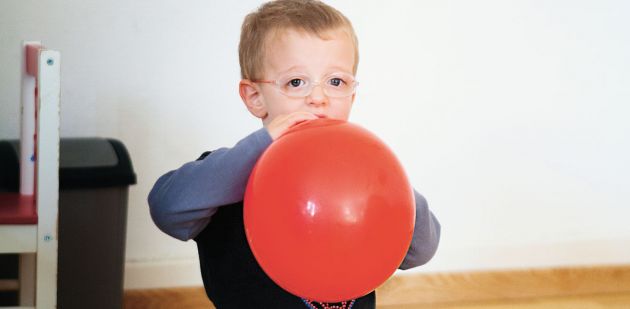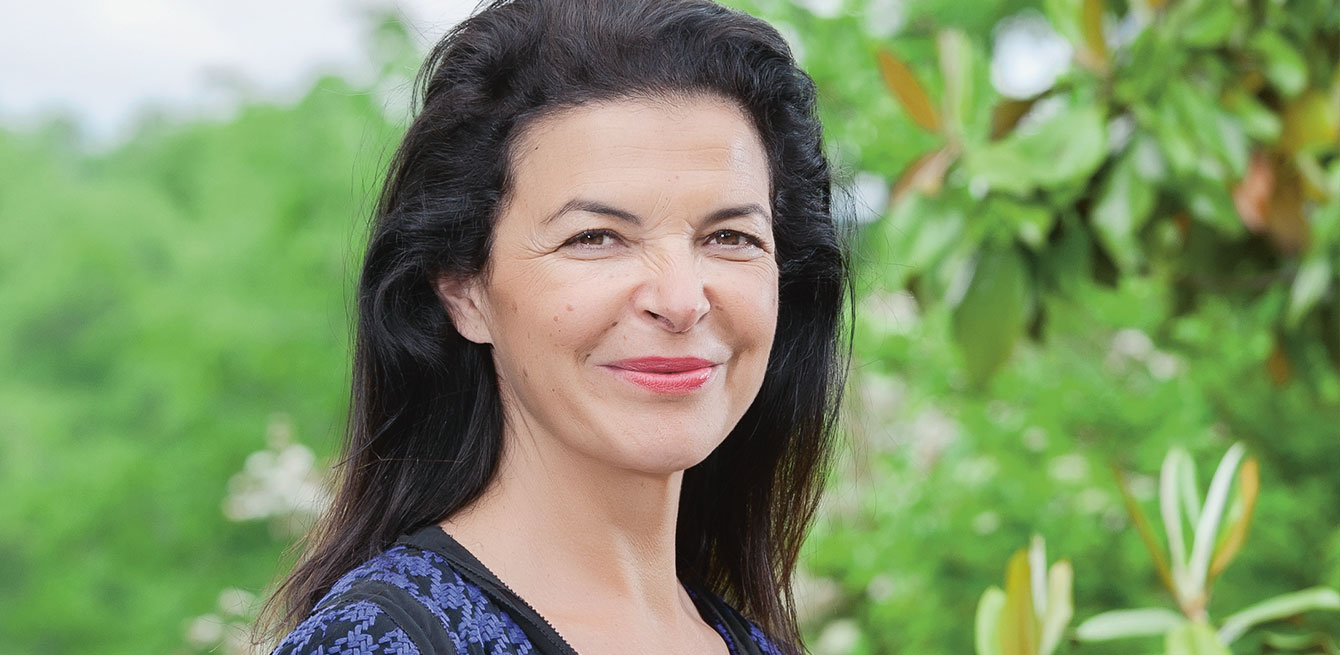Intensive therapies are making it possible for many autistic children to get the same schooling as other children. Just a few years ago, most had no independence and could not even speak.

“Autism needs to be diagnosed as early as possible.” Hilary Wood, head of the Centre for Early Intervention in Autism in Geneva, insists on the early detection of autism spectrum disorders (ASD) – a banner term used to refer to the range of conditions described as autistic – because scientific studies now widely support the effectiveness of care for very young children. “Most of the time, we can now detect a potential disorder in toddlers as early as 12 to 18 months of age,” the psychologist says.
“Regardless of the method used, research shows that the two keys for successfully treating autistic children are early care and intensive therapy, i.e. between 15 and 40 hours per week,” says Hilary Wood. The advances in neuroscience and genetics now prove that autistic children are born with a number of genetic abnormalities. Their brain functions differently from that of other babies, which is especially prevalent in social interactions. These children then slip into a vicious circle. During the first two years of life, most children acquire skills through social contact, by imitating, playing and communicating. From the earliest stages of childhood, young autistic children cannot progress normally and fall further and further behind.
“You’re born autistic, you don’t become autistic”
Nadia Chabane
Since the 1980s, several therapeutic methods to deal with autism disorders have been developed in the United States. They aim specifically to stimulate babies’ brains early, focusing on social interaction and language. If autistic children develop in these areas, they can make headway in other skills. The oldest and most widely known therapy is Applied Behavior Analysis (ABA). Created by the Norwegian psychologist Ivar Lovaas in 1987, this technique analyses the child’s behaviour and aims to increase or decrease the frequency of a given behaviour through repetition and reinforcement.
The Treatment and Education of Autistic and related Communication Handicapped Children (TEACCH) programme is based on a structured teaching model that uses the strengths and preferences of autistic children to help them develop, for example through detailed visuals to reinforce verbal language and help them learn to communicate. This method was developed in the 1960s by Eric Schopler, a psychologist from the University of North Carolina at Chapel Hill. Another programme is the Early Start Denver Model (ESDM), which mainly draws on ABA and was developed in 2003 by American psychologists Geraldine Dawson and Sally Rogers. This method focuses more on stimulating the toddler’s social motivation. When children’s desire to make contact with others grows, they become more independent and communicate more easily.
Since 2010, the Centre for Early Intervention in Autism in Geneva has been applying the Denver method with a small group of children age 1 to 3. “The results are spectacular,” says Stéphane Eliez, psychiatrist and director of the Geneva Medical Learning Office (Office médico-pédagogique). “Some children have gained the equivalent of 15 IQ points using this method, which radically transforms the outlook for their future. Seventy-five percent of the children who leave our centre can get standard schooling.” This success rate is impressive, but requires costly resources. Each child benefits from individual care from a psychologist for fifteen hours a week. The parents also have to learn the therapy and continue it at home. The teaching plan is personalised and reviewed every quarter by a multidisciplinary team to adapt the method as closely as possible to the child’s progress and abilities. Care at the centre costs between 70,000 and 80,000 Swiss francs per year.
But Stéphane Eliez has no doubt that the investment is worth it. “A disabled person who lives in an institution also costs 80,000 Swiss francs a year, but for the rest of their life. You do the maths,” he says. “The investment that the government should provide in the first years of an autistic child’s life is, in time, largely offset. And the benefits for families are incomparable.”
In the United States, care is free for all autistic children under age 3, quite different from the situation in Switzerland. The Geneva centre is a test project of the Federal Social Insurance Office, which has begun looking into the subject. “The government is starting to understand the need to invest in autism very early,” says Hilary Wood. And if the public authorities don’t act now, they could set off a time bomb. Autism now affects about one in 100 children, but official statistics are not yet available in Switzerland. Its prevalence has increased sharply in recent years, identified in one in every 68 births in the United States.
“I’ve noted in recent years that care has improved immensely, and attitudes have changed in Switzerland regarding autistic children. But we’re still far behind Anglo-Saxon and Scandinavian countries and need to catch up,” she says. “Many parents are angry and desperate. And it’s their fight that has brought us where we are today.”
Yves Crausaz, president of the organisation Autisme Romandie (Autism in French-speaking Switzerland), is one of these parents. The father of an autistic child, he says that he is satisfied with the recent advances. “But we’ve had to fight for years against the psychoanalytic view that blamed parents and forced our children to live a life of disability. I praise early care for children,” he says, “but I’d also like to sound an alarm. The lack of adequate structures for the many autistic teenagers and adults out there is doing them harm. And for them, the ABA and Denver methods come too late.” ⁄

Nadia Chabane is the director of the Cantonal Centre for Autism, scheduled to open in Lausanne in the autumn of 2015. She wants all autistic people in French-speaking Switzerland to be able to receive care with the latest methods.
IV You’re inaugurating the Cantonal Centre for Autism this autumn. What will the centre do?
NCIts main role will be to implement a high-quality clinical structure for autism. Our purpose is to offer the best possible conditions for care. The centre also aims to provide quality training to people who work with autistic children. A research team will focus on neuroscientific projects.
My goal is to develop a network of a wide range of professionals who deal with autism and create specialised units throughout the Canton of Vaud. I plan to disseminate a set of best practices in autistic care. For example, paediatricians should be aware of symptoms so that they can rapidly get adapted care for a child showing signs of abnormal behaviour.
IV You want autistic children to be diagnosed systematically before the age of 2. Why is that?
NCResearch shows that early diagnosis is essential. You’re born autistic, you don’t become autistic. Children must be cared for as early as possible, because the brain is the most plastic between the age of 2 and 4. They can make remarkable strides. Some of them can even get standard schooling. Those who cannot go to school still progress, gaining independence and socialisation. That means they require less guidance and support as adults.
IV Will you focus on one educational method in particular?
NCWe will use methods (ABA, TEACCH or Denver) whose effectiveness has been scientifically proven in recent years. They need intensive care, requiring one educator per child and involving the parents. I wouldn’t emphasise one method over another because each child is unique and needs an individual development plan. Some methods are better suited to certain children than others.
IV Will psychoanalysis play a role at your centre?
NCThe causes of autism are genetic and affect how the brain functions. The latest research statistics don’t recommend psychoanalytic treatment for autism. However, psychoanalysis and psychotherapy are definitely valid guidance tools, especially for families.
IV Do you think that autism research will produce any major findings over the next few years?
NCI’m convinced it will. Over the past ten years, heavy investment has gone into autism research. Neuroscience still has much to offer us. We will probably better understand the different causes of autism and we will also better know how to diagnose it. The therapeutic methods available will be developed further to become even more effective. Drugs may eventually be developed as well.
More than a hundred genes are believed to be involved in ASD.
The disease is four times more prevalent in boys than girls. Children with an autistic sibling are ten times more likely to develop autism, and twice as likely if they have a cousin with the disorder. Some cases of autism come from breaks in the DNA sequence, which may be related to in vitro fertilisation or the parents’ age. The chances of having an autistic child are four times higher for a 40-year old couple than for a 25-year old couple.
Ten percent of autism cases are an autoimmune disease. Ample research, including one study conducted in 2013 by a team at Arkansas Children’s Hospital in the United States, has reported a high incidence of cerebral folate receptor autoantibodies in autistic children. And folate deficiency is associated with autistic symptoms. Following this discovery, researchers administered high doses of folinic acid (vitamin B9) to autistic children. The findings were spectacular. The children’s verbal communication, attention and characteristic behaviour all improved, with low adverse side effects. But for the time being, no one yet understands the long-term consequences of administering such high doses of vitamin B9.
The uterine environment plays a predominant role in the development of autism. Taking antiepileptic medication around the 19th week of pregnancy increases the risk, as do certain viruses affecting the mother, such as cytomegalovirus. It has been proven that if the mother lives within 300 metres of a field sprayed with industrial pesticides during the first three months of pregnancy, the likelihood of her child developing ASD increases substantially. Extremely premature babies weighing less than 1.5 kg at birth are 20% more likely to suffer from autism than babies born at term.